
Station Name: WILSTROP SIDING[Source:
Alan Young]
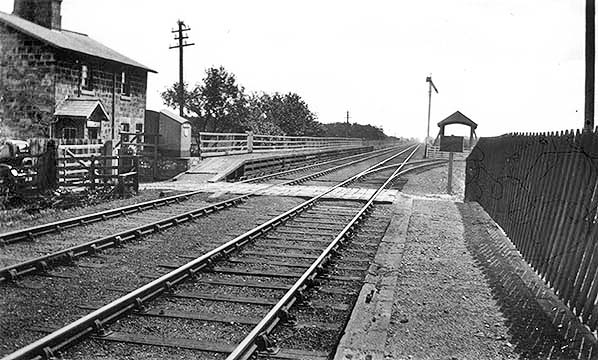 Wilstrop Siding station, looking south-east from the down (Harrogate-bound) platform c1930. The up platform is on the far side of the crossing, adjacent to the railway staff cottages. An NER nameplate ‘Wilstrop Siding’ can be seen affixed to the porch. The shed with the curved roof, just beyond the cottages, encloses the lever frame. The platforms are constructed of timber with infill, and their narrowness will be noted. No shelters or lighting are provided for passengers. Just beyond the crossing the goods siding diverges to the right. A shelter has been built over the siding.
Copyright photo from Stations UK  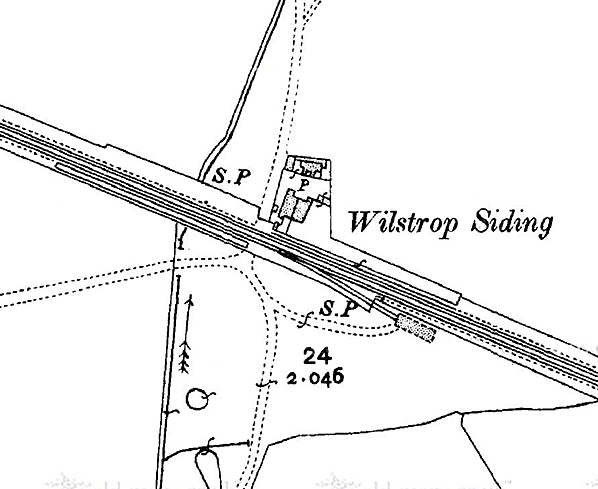
The passenger platforms of Wilstrop Siding station can be seen staggered on either side of the level crossing, the up platform being to the south-east and adjacent to the railway staff cottages. No buildings are shown on the platforms. The goods siding is also south-east of the crossing and is on the down side. Earlier maps show the siding was longer than shown here passing through the wooden shed.

The level crossing and railway staff cottages at Wilstrop Siding are seen in May 1973, looking east. The up platform used to be on the far side of the railway track, and the down platform was behind the photographer. Until 1972 the route was double track. The lever frame from which the gates are locked and signals are operated is in the hut beside the telegraph pole.
Photo by John Mann 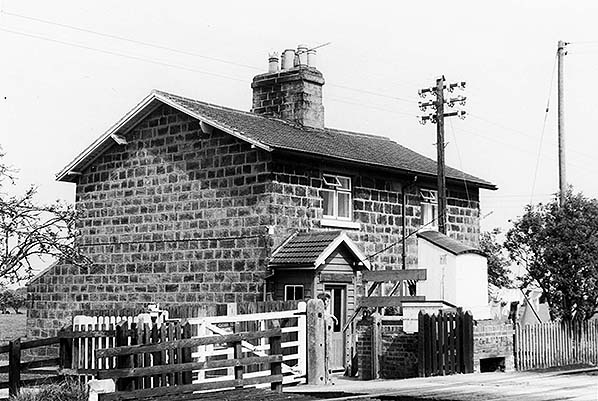 The railway cottages at Wilstrop Siding, seen in May 1973; the figure seen by the door is possibly the crossing keeper. The lever frame from which the gates are locked and signals are operated is visible behind the hut which partly shelters it. The level crossing over a narrow lane is in the foreground.
Photo by John Mann 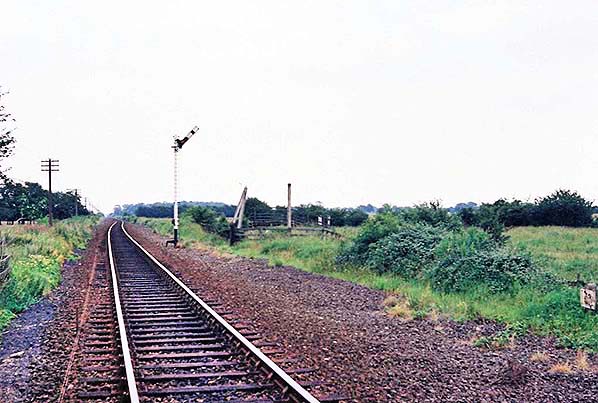
Looking east from the level crossing at Wilstrop Siding after the railway was singled between Poppleton and Hammerton. The up platform was formerly to the left of the railway track and the goods siding was beyond and to the right of the signal which is in the ‘off’ position indicating that a train is expected from the York direction; the signal, which protects Wilstrop level crossing is operated from a frame behind the photographer. The site of the goods siding is clearly visible as is part of the wooden shed that straddled the siding (c1930s picture above). The siding closed in 1964.
Photo by Alan Lewis from his Ipernity photo gallery 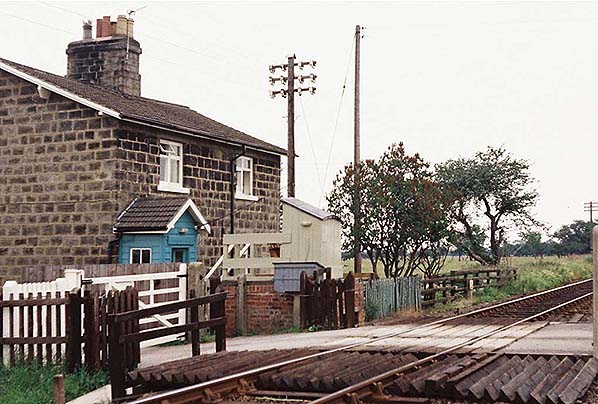
The railway cottages at Wilstrop Siding, looking east over the level crossing. The lever frame is on the brick plinth, partly protected by the timber shelter.
Photo by Alan Lewis from his Ipernity photo gallery 
Looking east from the level crossing at Wilstrop Siding in May 2010. The route through this point was double track until 1972. The goods siding that gave its name to the station was formerly ahead and to the right. On the extreme left is the brick plinth and glazed shelter for the lever frame. The home signal ahead is operated from this frame; it is in the 'off' position indicating that a train from the York direction is expected.
Photo by Martin Dawes reproduced from Geograph under creative commons licence 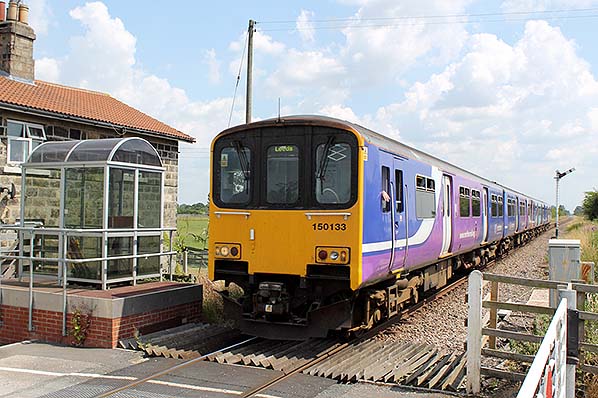 The staff cottages at Wilstrop Siding are in use, when seen on this photograph in July 2013, and the crossing is still attended during the day. The frame is enclosed within the metal-and-glass booth on brick foundations. The Harrogate-bound Class 150 DMU No.150 133 is passing the site of the station. The site of the long-demolished up platform was on the far side of the track, obscured by the train. The line was singled in 1972-73.
Photo by John Carter from his Flickr photostream 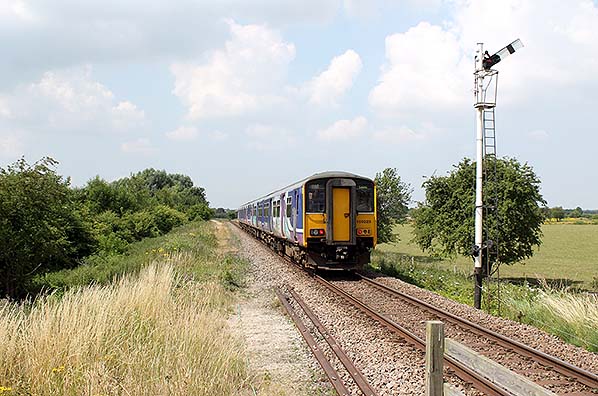
Looking north-west from the level crossing at Wilstrop Siding in July 2013 as a DMU (150 223) on the 13.11 working from York disappears towards Harrogate and Leeds. The long-demolished down platform of this station was immediately ahead of the camera.
Photo
by John Carter from his Flickr photostream
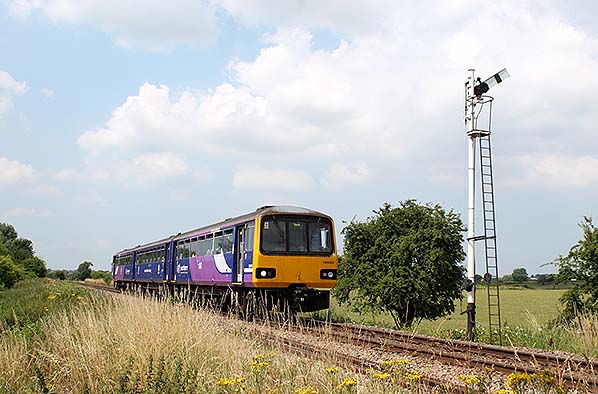
DMU 144 022 is operating the 12.29 Leeds to York in July 2013 and is passing the site of the down platform at Wilstrop Siding, formerly to the left of the track. The view is westward.
Photo by John Carter from his Flickr photostream
|



 Home Page
Home Page